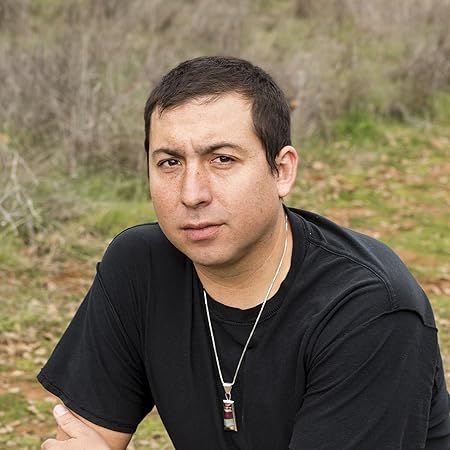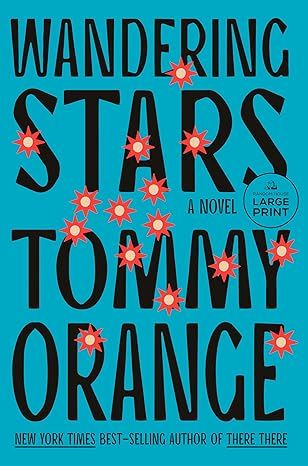There ThereKindle
4.3
-
16,831 ratings
PULITZER PRIZE FINALIST • NATIONAL BESTSELLER • A wondrous and shattering award-winning novel that follows twelve characters from Native communities: all traveling to the Big Oakland Powwow, all connected to one another in ways they may not yet realize.
A contemporary classic, this “astonishing literary debut” (Margaret Atwood, bestselling author of The Handmaid’s Tale) “places Native American voices front and center” (NPR/Fresh Air).
One of The Atlantic’s Great American Novels of the Past 100 Years
Among them is Jacquie Red Feather, newly sober and trying to make it back to the family she left behind. Dene Oxendene, pulling his life together after his uncle’s death and working at the powwow to honor his memory. Fourteen-year-old Orvil, coming to perform traditional dance for the very first time. They converge and collide on one fateful day at the Big Oakland Powwow and together this chorus of voices tells of the plight of the urban Native American—grappling with a complex and painful history, with an inheritance of beauty and spirituality, with communion and sacrifice and heroism
A book with“so much jangling energy and brings so much news from a distinct corner of American life that it’s a revelation” (The New York Times).It is fierce, funny, suspenseful, and impossible to put down--full of poetry and rage, exploding onto the page with urgency and force. There There is at once poignant and unflinching, utterly contemporary and truly unforgettable.
Don't miss Tommy Orange's new book, Wandering Stars!
Kindle
$12.99
Available instantly
Audiobook
$0.00
with membership trial
Hardcover
$15.63
Paperback
$8.89
Ships from
Amazon.com
Payment
Secure transaction
ISBN-10
0525436146
ISBN-13
978-0525436140
Print length
304 pages
Language
English
Publisher
Vintage
Publication date
May 06, 2019
Dimensions
5.13 x 0.64 x 7.98 inches
Item weight
7.6 ounces
Popular Highlights in this book
Being Indian has never been about returning to the land. The land is everywhere or nowhere.
Highlighted by 6,318 Kindle readers
Does what we try most to avoid come after us because we paid too much attention to it with our worry?
Highlighted by 5,438 Kindle readers
There There, by Radiohead. The hook is Just ’cause you feel it doesn’t mean it’s there.
Highlighted by 4,875 Kindle readers
Product details
ASIN :
B075HY1NFB
File size :
6822 KB
Text-to-speech :
Enabled
Screen reader :
Supported
Enhanced typesetting :
Enabled
X-Ray :
Enabled
Word wise :
Enabled
Editorial reviews
“Powerful. . . . There There has so much jangling energy and brings so much news from a distinct corner of American life that it’s a revelation.” —The New York Times
“With a literary authority rare in a debut novel, it places Native American voices front and center before readers’ eyes.” —NPR/Fresh Air
“An astonishing literary debut.” —Margaret Atwood
“Masterful. . . . White-hot. . . Devastating.” —The Washington Post
“Pure soaring beauty.” —The New York Times Book Review
“Stunning.” —The Boston Globe
“Brilliantly, furiously, magnificently, tragically, the story of America.” —Elle
“Heartbreaking.” —Esquire
“Electrifying.” —Entertainment Weekly
“Brilliant, propulsive.” —People
“Exquisite. . . . [An] exceptional debut. . . . Sublimely render[s] the truth of experiences that are passed over.” —San Francisco Chronicle
“Mr. Orange’s sparkling debut is not merely a literary triumph but a cultural and political one, too. It is a work of defiance and recovery.” —The Economist
“Powerful. . . . As contemporary, tragic, and American as a breaking news alert.” —The Christian Science Monitor
“Stunning.” —Mother Jones
“How do you rewrite the story of a people? This question shapes Tommy Orange’s sorrowful, beautiful debut novel. . . . Even in its tragic details, it is lyrical and playful, shaking and shimmering with energy.” —The Guardian
“Gripping. . . . Unforgettable. . . . There There paints a vivid portrait of American lives few readers have ever known.” —Bustle
“Reader, I must confirm: There There really is an extremely good book. . . . This is a trim and powerful book, a careful exploration of identity and meaning in a world that makes it hard to define either. Go ahead and go there there.” —Constance Grady, Vox
“This is the kind of novel you finish and immediately need your book club to read so you can talk about it with other people. . . . It’s also a powerful reminder of the ability of narrative to move minds.” —GOOP
“Staggering. . . . Expertly rendered. . . . Orange successfully refutes the idea of a monolithic Native American identity.” —Buzzfeed
“As funny as it is heartbreaking, tracking the multigenerational story of twelve Native Americans with themes of violence, identity, and despair.” —PopSugar
“Orange’s novel is one of healing, pulling together the intimacies of family, community, history, and violence.” —The Rumpus
“An ambitious and galvanizing novel. . . . It’s somehow a page-turner at the same time, propelled by the incandescent energy of Orange’s prose.” —Thrillist
“Bursting with talent and big ideas… Funny and profane and conscious of the violence that runs like a scar through American culture.” —The Seattle Times
“[A] smashing debut. . . . Urgent. . . . The voices are dynamic, varied and very much of the moment, a chorus of American Indian voices coming straight from the city.” —The Dallas Morning News
“Compulsively readable. . . . A dazzlingly intricate narrative that marries the personal and the ancestral. . . . A masterful work.” —Pittsburgh Post-Gazette
“Searing. . . . There There finds satisfying richness in the minutiae of its characters' lives—their daily victories and losses, enduring frustrations, acts of tenderness, and senses of wonder.” —The Austin Chronicle
“[Orange] writes with such finely honed literary craft that the book fairly begs to be read more than once. . . . It is gritty as well as beautiful, poetic; it is shocking, sometimes very amusing, often emotionally gut-punching, and rife with unsentimental insight.” —Santa Fe New Mexican
“Orange’s book is truly a page turner filled with multi-generational accounts of violence, recovery, memory, identity, beauty, and even a little despair. It’s a book where you as the reader can’t put down until you finish it with both a sense of accomplishment and a feeling of anticipation of what could happen next.” —Lakota Country Times
“This is not just a novel. It’s a carefully, beautifully crafted speech into a megaphone, telling stories of real, contemporary Native life in a specific place. . . . It offers a glimpse of an interconnected life, a world in which small stones don’t just sink to the bottom of the sea but changes tides.” —The Times Literary Supplement (London)
“Bold and engrossing. . . . There is hope in this book, hope in the strength of stories told and stories that are finally heard. . . . The wonder of this accomplished debut is the way in which he has got under his characters’ skins, allowing them to speak for themselves. . . . This is a powerful novel of pain and possibility.” —Financial Times
“Welcome to a brilliant and generous artist who has already enlarged the landscape of American Fiction. There There is a comic vision haunted by profound sadness. Tommy Orange is a new writer with an old heart.” —Louise Erdrich
“There There drops on us like a thunderclap; the big, booming, explosive sound of twenty-first century literature finally announcing itself. Essential.” —Marlon James, author of A Brief History of Seven Killings
“There There is a miraculous achievement, a book that wields ferocious honesty and originality in service of telling a story that needs to be told. This is a novel about what it means to inhabit a land both yours and stolen from you, to simultaneously contend with the weight of belonging and unbelonging.” —Omar El Akkad, author of American War
��“There There is an urgent, invigorating, absolutely vital book by a novelist with more raw virtuosic talent than any young writer I've come across in a long, long time.” —Claire Vaye Watkins, author of Gold Fame Citrus
Read more
Sample
Indian Head
There was an Indian head, the head of an Indian, the drawing of the head of a headdressed, long haired, Indian depicted, drawn by an unknown artist in 1939, broadcast until the late 1970s to American TVs everywhere after all the shows ran out. It’s called the Indian Head Test Pattern. If you left the TV on, you’d hear a tone at 440 hertz—the tone used to tune instruments—and you’d see that Indian, surrounded by circles that looked like sights through rifle scopes. There was what looked like a bullseye in the middle of the screen, with numbers like coordinates. The Indian head was just above the bullseye, like all you’d need to do was nod up in agreement to set the sights on the target. This was just a test.
In 1621, colonists invited Massasoit, chief of the Wampanoags, to a feast after a recent land deal. Massasoit came with ninety of his men. That meal is why we still eat a meal together in November. Celebrate it as a nation. But that one wasn’t a thanksgiving meal. It was a land deal meal. Two years later there was another, similar meal, meant to symbolize eternal friendship. Two hundred Indians dropped dead that night from supposed unknown poison.
By the time Massasoit’s son Metacomet became chief, there were no Indian-Pilgrim meals being eaten together. Metacomet, also known as King Phillip, was forced to sign a peace treaty to give up all Indian guns. Three of his men were hanged. His brother Wamsutta was let’s say very likely poisoned after being summoned and seized by the Plymouth court. All of which lead to the first official Indian war. The first war with Indians. King Phillip’s War. Three years later the war was over and Metacomet was on the run. He was caught by Benjamin Church, Captain of the very first American Ranger force and an Indian by the name of John Alderman. Metacomet was beheaded and dismembered. Quartered. They tied his four body sections to nearby trees for the birds to pluck. John Alderman was given Metacomet’s hand, which he kept in a jar of rum and for years took it around with him—charged people to see it. Metacomet’s head was sold to the Plymouth Colony for thirty shillings—the going rate for an Indian head at the time. The head was spiked and carried through the streets of Plymouth before it was put on display at Plymouth Colony Fort for the next twenty five years.
In 1637, anywhere from four to seven hundred Pequot were gathered for their annual green corn dance. Colonists surrounded the Pequot village, set it on fire, and shot any Pequot who tried to escape. The next day the Massachusetts Bay Colony had a feast in celebration, and the governor declared it a day of thanksgiving. Thanksgivings like these happened everywhere, whenever there were, what we have to call: successful massacres. At one such celebration in Manhattan, people were said to have celebrated by kicking the heads of Pequot people through the streets like soccer balls.
The first novel ever written by a Native person, and the first novel written in California, was written in 1854, by a Cherokee guy named John Rollin Ridge. His novel, The Life and Adventures of Joaquin Murieta, was based on a supposed real-life Mexican bandit from California by the same name, who, in 1853, was killed by a group of Texas rangers. To prove they’d killed Murrieta and collect the five thousand dollar reward put on his head—they cut it off. Kept it in a jar of whiskey. They also took the hand of his fellow bandit Three Fingered Jack. The rangers took Joaquin’s head and the hand on a tour throughout California, charged a dollar for the show.
The Indian head in the jar, the Indian head on a pike were like flags flown, to be seen, cast broadly. Just like the Indian head test pattern was broadcast to sleeping Americans as we set sail from our living rooms, over the ocean blue green glowing airwaves, to the shores, the screens of the new world.
Rolling Head
There’s an old Cheyenne story about a rolling head. We heard it said there was a family who moved away from their camp, moved near a lake—husband, wife, daughter, son. In the morning when the husband finished dancing, he would brush his wife’s hair and paint her face red, then go off to hunt. When he came back her face would be clean. After this happened a few times he decided to follow her and hide, see what she did while he was gone. He found her in the lake, with a water monster, some kind of snake thing, wrapped around her in an embrace. The man cut the monster up and killed his wife. He brought the meat home to his son and daughter. They noticed it tasted different. The son who was still nursing said, my mother tastes just like this. His older sister told him it’s just deer meat. While they ate a head rolled in. They ran and the head followed them. The sister remembered where they played, how thick the thorns were there, and she brought the thorns to life behind them with her words. But the head broke through, kept coming. Then she remembered where rocks used to be piled in a difficult way. The rocks appeared when she spoke of them, but didn’t stop the head, so she drew a hard line in the ground which made a deep chasm the head couldn’t cross. But after a long heavy rain, the chasm filled with water. The head crossed the water, and when it reached the other side, it turned around and drank all that water up. The rolling head became confused and drunk. It wanted more. More of anything. More of everything. And it just kept rolling.
One thing we should keep in mind, moving forward, is that no one ever rolled heads down temple stairs. Mel Gibson made that up. But we do have, those of us who saw the movie, in our minds the rolling heads down temple stairs in a world meant to resemble the real Indian world in the 1500s in ancient Mexico. Mexicans before they were Mexicans. Before Spain came.
We’ve been defined by everyone else and continue to be slandered despite easy-to-look-up-on-the-internet facts about the realities of our histories and current state as a people. We have the sad, defeated Indian silhouette, and the rolling heads down temple stairs, we have it in our heads, Kevin Costner saving us, John Wayne’s six-shooter slaying us, an Italian guy named Iron Eyes Cody playing our parts in movies. We have the litter-mourning, tear-ridden Indian in the commercial (also Iron Eyes Cody), and the sink-tossing, Jack Nicholson saving, crazy Indian who was the narrator in the novel, the voice of One Flew Over the Cuckoo’s Nest. We have all the logos and mascots. The copy of a copy of the image of an Indian in a textbook. All the way from the top of Canada, the top of Alaska, down to the bottom of South America, Indians were removed then reduced to a feathered image. Our heads are on flags, jerseys, and coins. Our heads were on the penny first, of course, the Indian head cent, and then on the buffalo nickel, both before we could even vote as a people—which, like the truth of what happened in history all over the world, and like all that spilled blood from slaughter, is now out of circulation.
Massacre as Prologue
Some of us grew up with stories about massacres. Stories about what happened to our people not so long ago. How we came out of it. At Sand Creek, we heard it said that they mowed us down with their howitzers. Volunteer militia under Colonel John Chivington came to kill us, we were mostly women, children, and elders. The men were away to hunt. They’d told us to fly the American flag. We flew that and a white flag too. Surrender, the white flag waved. We stood under both flags as they came at us. They did more than kill us. They tore us up. Mutilated us. Broke our fingers to take our rings, cut off our ears to take our silver, scalped us for our hair. We hid in the hollows of tree trunks, buried ourselves in sand by the riverbank. That same sand ran red with blood. They tore unborn babies out of bellies, took what we intended to be, our children before they were children, babies before they were babies, they ripped them out of our bellies. They broke soft baby heads against trees. Then they took our body parts as trophies and displayed them on stage in a downtown Denver. Colonel Chivington danced with dismembered parts of us in his hands, with women’s pubic hair, drunk, he danced, and the crowd gathered there before him were all the worse for cheering and laughing along with him. It was a celebration.
Hard, Fast
Getting us to cities was supposed to be the final, necessary step in our assimilation, absorption, erasure, completion of a five hundred year old genocidal campaign. But the city made us new, and we made it ours. We didn’t get lost amidst the sprawl of tall buildings, the stream of anonymous masses, the ceaseless din of traffic. We found each other, started up Indian Centers, brought out our families and powwows, our dances, our songs, our beadwork. We bought and rented homes, slept on the streets, under freeways, we went to school, joined the armed forces, populated Indian bars in the Fruitvale in Oakland, and in the Mission in San Francisco. We lived in boxcar villages in Richmond. We made art and we made babies and we made way for our people to go back and forth between reservation and city. We did not move to cities to die. The sidewalks and streets, the concrete absorbed our heaviness. The glass, metal, rubber and wires, the speed, the hurtling masses—the city took us in. We were not Urban Indians then. This was part of the Indian Relocation Act, which was part of the Indian Termination Policy, which was and is exactly what it sounds like. Make them look and act like us. Become us. And so disappear. But it wasn’t just like that. Plenty of us came by choice, to start over, to make money, or just for a new experience. Some of us came to cities to escape the reservation. We stayed after fighting in the second world war. After Vietnam too. We stayed because the city sounds like a war, and you can’t leave a war once you’ve been, you can only keep it at bay—which is easier when you can see and hear it near you, that fast metal, that constant firing around you, cars up and down the streets and freeways like bullets. The quiet of the reservation, the side-of-the-highway towns, rural communities, that kind of silence just makes the sound of your brain on fire that much more pronounced.
Plenty of us are urban now. If not because we live in cities than because we live on the internet. Inside the high rise of multiple browser windows. They used to call us sidewalk Indians. Called us citified, superficial, inauthentic, cultureless refugees, apples. An apple is red on the outside and white on the inside. But what we are is what our ancestors did. How they survived. We are the memories we don’t remember, that live in us, that we feel, that make us sing and dance and pray the way we do, feelings from memories that flare and bloom unexpectedly in our lives like blood through a blanket from a wound made by a bullet fired by a man shooting us in the back for our hair, for our heads, for a bounty, or just to get rid of us.
When they first came for us with their bullets, we didn’t stop moving even though the bullets moved twice as fast as the sound of our screams, and even when their heat and speed broke our skin, shattered our bones, skulls, pierced our hearts, we kept on, even when we saw the bullets send our bodies flailing through the air like flags, like the many flags and buildings that went up in place of everything we knew this land to be before. The bullets were premonitions, ghosts from dreams of a hard fast future. The bullets moved on after moving through us, became the promise of what was to come, the speed and the killing, the hard fast lines of borders and buildings. They took everything and ground it down to dust as fine as gunpowder, they fired their guns into the air in victory and the strays flew out into the nothingness of histories written wrong and meant to be forgotten. Stray bullets and consequences are landing on our unsuspecting bodies even now.
Urbanity
Urban Indians were that generation born in the city. We’ve been moving for a long time, but the land moves with you like memory. An Urban Indian belongs to the city, and cities belong to the earth. Everything here is formed in relation to every other living and nonliving thing from the earth. All our relations. The process that brings anything to its current form, chemical, synthetic, technological or otherwise doesn’t make the product not a product of the living earth. Buildings, freeways, cars—are these not of the earth? Were they shipped in from Mars, the moon? Is it because they’re processed, manufactured, or that we handle them? Are we so different? Were we at one time not something else entirely, homosapiens, single celled organisms, space dust, unidentifiable pre-bang quantum theory? Cities form in the same way as galaxies. Urban Indians feel at home walking in the shadow of a downtown building. We came to know the downtown Oakland skyline better than we did any sacred mountain range, the redwoods in the Oakland hills better than any other deep wild forest. We know the sound of the freeway better than we do rivers, the howl of distant trains better than wolf howls, we know the smell of gas and freshly wet concrete, the smell of burnt rubber, better than we do the smell of cedar or sage or even frybread—which isn’t traditional, like reservations aren’t traditional, but nothing is original, everything comes from something before, which was once nothing. Everything is new and doomed. We ride buses, trains, and cars across, over, and under concrete plains. Being Indian has never been about returning to the land. The land is everywhere or nowhere.
Read more
About the authors
Tommy Orange
TOMMY ORANGE is faculty at the Institute of American Indian Arts MFA program. He is an enrolled member of the Cheyenne and Arapaho Tribes of Oklahoma. He was born and raised in Oakland, California.
Reviews
Customer reviews
4.3 out of 5
16,831 global ratings
Louise A Stafford
5
This book left me speechless
Reviewed in the United States on July 17, 2024
Verified Purchase
So emotional. So heartbreaking. So well done. The book is like a fine dance. I may just need to reread it.
2 people found this helpful
Katie Westholter
5
A Must Read
Reviewed in the United States on July 28, 2024
Verified Purchase
I am 52 pages into the book and can’t put it down. It will make you rethink everything you’ve been taught about the history of Indigenous Native people of the land we call America today. My world is forever changed. I can’t wait to share this book with others. It’s a MUST READ!
Katherine Y
5
Novel explores troubled urban lives of twelve Native American characters
Reviewed in the United States on March 7, 2022
Verified Purchase
“There is no there there.” This phrase sums up the experience of twelve Native Americans in this novel as they try to transition from reservations to life in modern American cities. The city in this case is Oakland. All of the Native American characters are trying to forge a new identity without completely losing their ties to the past. Dene Oxendene wants to make a film to capture the stories of urban Native Americans. He desperately needs a cultural arts grant to make that happen. Jacquie Red Feather is turning her life around after an alcohol addiction that has caused her to lose her kids to her sister. She wants to try to reconnect with them. Tony Loneman has problems fitting in. His problem isn’t so much that he’s Native American. It’s because he bears a daily physical reminder of his mother’s alcoholism. Tony has fetal alcohol syndrome. Then there’s Calvin Johnson. Calvin’s father abandoned him as a young boy, so he lives with his older sister. He’s not taking the medicine that helps to manage his bipolar disorder. These are a few of the people who are drawn to attend the Big Oakland Powwow. The promise of connecting to their history and moving forward in their lives is the motivation for many of the attendees. The motives of several of the people coming to the festival aren’t so pure. They intend to steal the money the festival generates, and they have a plan to do it. Everyone who comes to the Big Oakland Powwow will have their lives changed permanently. Each chapter of the novel follows one of the twelve characters. As I was reading, I couldn’t help but feel the building tension as each character moved toward the destination of the powwow. This is one of those reads where you trust the author is taking you somewhere to show you something important. The climax is heart-wrenching. Tommy Orange’s debut novel gives readers a glimpse into the lives of Native Americans trying to find a way to build lives in modern America without losing their history and identities. The book is funny, wise, raw, and overwhelmingly sad. Anyone who likes to read well-written books about Native Americans and the struggles they face will find this one riveting.
Read more
17 people found this helpful
AnitaPeron
5
Powerful, innovative, and captivating
Reviewed in the United States on September 24, 2018
Verified Purchase
I heard an interview with Tommy Orange and he was so thoughtful and intelligent... he had a deeply human way of talking about things and making connections that welcomed the listener into the conversation.
The minute I got home, I bought There There and dove into the world he had captured and the people he created to bring that world to life. It’s a phenomenal book. On top of a riveting story and characters that you invest in deeply, the story itself is so well-constructed, so intimately and carefully layered, that when you get to the end, you know you have just experienced a true work of art.
I recently went to a arts conference up at Western Washington University in Bellingham and an elder from the Lummi Nation was speaking about language and placenames. I have always considered myself a local. I was born here. I am invested in this town and in the surrounding land. It means something to me, very dear and very real. But listening to him, it dawned on me (duh) that I am a colonist. Maybe an accidental colonist, but still. When I’ve talked to others about it, I’ve been met with hostility and racism and ignorance. People denigrating and undermining what the Lummi people went through, minimizing their value so as to make it okay that we non-Natives are here and the reservation is small. Finally, I could hear it for myself. The language and reasoning of colonization - the mindset of takers who don’t want to feel bad for taking. We were raised in a community that looks down on the people who actually belong here... which is such a sick and backward and unhealthy way to think and act. It’s been strange to see myself that way, as a colonist. But once I realized that we’re no different than the Boers of South Africa or the non-natives of New Zealand and Australia and Hawaii and Fiji and... I mean... this is a bloody and unhealthy legacy.
And then this book comes at that issue from the other side. I needed to hear this. I needed to read this. And I think we need to reorganize how we teach history and culture. Not once did I learn anything about the Lummi Nation in school. Not once did a teacher explain to me that Whatcom - the name of our lake and creek - meant “the sound of water going over stones.” I would’ve liked to have known those things. I think it would’ve connected me in a deeper way to the place where I live, but also it would’ve given every single kid in that classroom the message that the people who were here first are important, are still here, and are a key part of our history. Instead, we learned about the colonists. The loggers and mill owners. The early settlers. And the message was clear, even by third grade: We were the winners. They were the losers. And that’s a messed up message to send. But you can hear it in the way people talk in my town. They don’t see the Lummi Nation as survivors, as people who maintained their culture and their language and who thrived against all odds. They don’t see themselves as the beneficiaries of their colonist ancestors. They live in a fantasy. And, from what I can tell, when you’re living in a fantasy, you can’t accurately solve things in the real world.
I think this book will help wake people up. Natives and non-Natives alike. It’s also a fantastic book and stands on its own merit as an amazing piece of writing.
Read more
70 people found this helpful
A Book Vacation
5
DROP EVERYTHING AND READ THIS POWERFUL NOVEL
Reviewed in the United States on November 3, 2019
Verified Purchase
Y’all. This book. It packs a punch like no other, and I was captivated by it as the stories began to intertwine and come to a head, to one final moment that brings the characters all together in this gripping tale transcending multiple generations. Gripping is an understatement… when all was said and done, and the novel stopped, I felt myself continue to lurch forward with momentum. I don’t think I can express how deep and beautiful this novel is. I can’t do it justice. But let me back up.
Tommy Orange’s novel is difficult to start. When I first began listening via audiobook, I thought I was going to hate it. It didn’t make sense to me. The prologue, which is part of the novel and should be read, begins with a candid retelling of history as North Americans know it–laying bare what the history books don’t teach us, shedding light on the part of history that we’d like to forget and sweep under a rug, never to be seen again. I thought to myself, “is this novel a history lesson?”. No. But yes. Though fictitious, it has many truths, and the experiences of many of these characters are unfortunately all too real. Because those affected by our nation’s bloody history in the past are still affected by it in our present, which Orange makes explicitly clear as his novel commences with the first story from our twelve narrators, Tony Loneman. Truth be told, the first story, Tony’s story, was not how I’d start this novel. I found it a bit dry, and I wasn’t sure where Orange was going with the novel. Then the second narrator took over, and I didn’t see any obvious connections, and I was wondering, “is this novel just a grouping of short stories?”. The stories were just there, and they didn’t entice me. They were just unhitched stories. But as I continued, I began to see the connections methodically woven between the characters, all of which is leading us, the narrators and the reader, to one final moment at the powwow; all of these twelve characters are perfectly interconnected, though they don’t know it as of yet. And as they continue their stories, adding to what we already know, and beginning to converge on Oakland’s Coliseum, the novel takes hold, creating feelings of intense foreboding through Orange’s employ of dramatic irony. The interlude, from which I quoted a particularly stunning section above, floored me, and it was then that I knew, without a doubt, that this novel is a five star read. Orange is matter-of-fact, and he’s hitting on topics that we, as a nation, have fought about for far too long, still attempting to sweep truth under the rug in order to not face the reality of our current world, or who we are, and our sordid history. And while the interlude above is just that, and the narrators barely touch upon what is explicitly stated above–it’s not a novel steeped in politics or in your face–it’s there, calling to the reader, reminding us that privilege exists, that some are luckier than others, and that if we are to survive this harrowing world, we must come together, to understand one another, and to stop the fighting. This novel is fierce.
When There There ended, I was speechless. One, I couldn’t believe Orange left us the way he did, but two, it’s just so unspeakably beautiful, thought-provoking, and intense. Five amazing stars!
I borrowed the audible of this novel from the library, but then purchased my own paperback copy from Amazon, because this powerful novel is a must for my shelves.
Read more
45 people found this helpful
Top Tommy Orange titles
View allBest Sellers
View all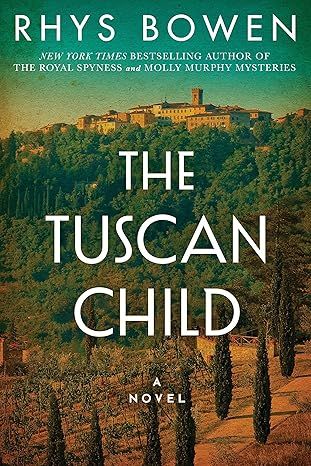
The Tuscan Child
4.2
-
100,022
$8.39
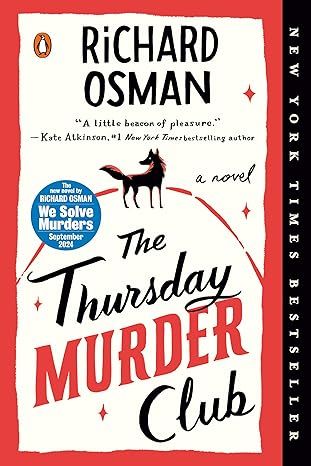
The Thursday Murder Club: A Novel (A Thursday Murder Club Mystery)
4.3
-
155,575
$6.33
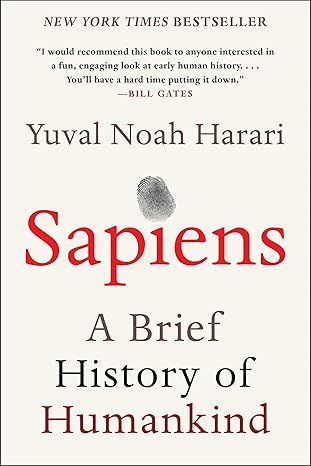
Sapiens: A Brief History of Humankind
4.6
-
140,302
$13.49
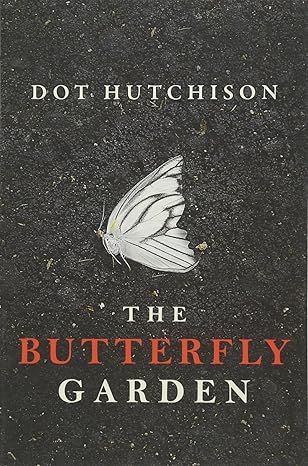
The Butterfly Garden (The Collector, 1)
4.3
-
88,556
$9.59
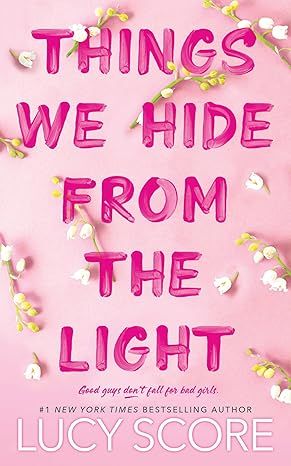
Things We Hide from the Light (Knockemout Series, 2)
4.4
-
94,890
$11.66
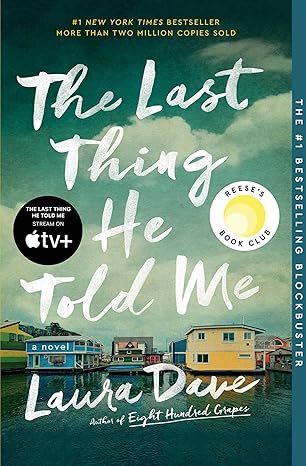
The Last Thing He Told Me: A Novel
4.3
-
154,085
$2.99

The Perfect Marriage: A Completely Gripping Psychological Suspense
4.3
-
143,196
$9.47
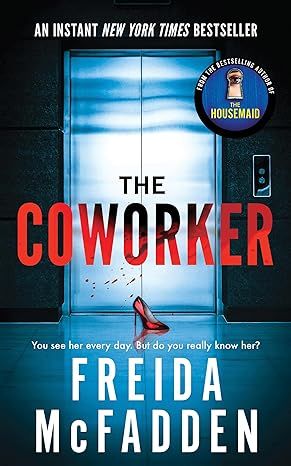
The Coworker
4.1
-
80,003
$13.48

First Lie Wins: A Novel (Random House Large Print)
4.3
-
54,062
$14.99
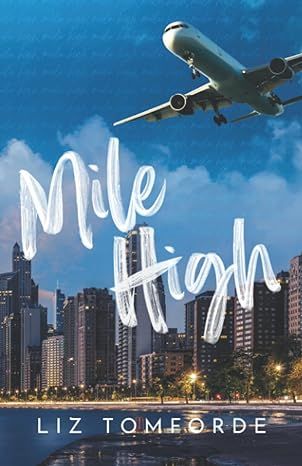
Mile High (Windy City Series Book 1)
4.4
-
59,745
$16.19

Layla
4.2
-
107,613
$8.99
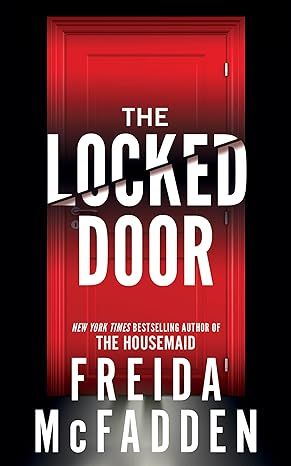
The Locked Door
4.4
-
94,673
$8.53

